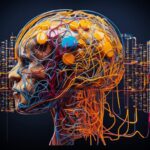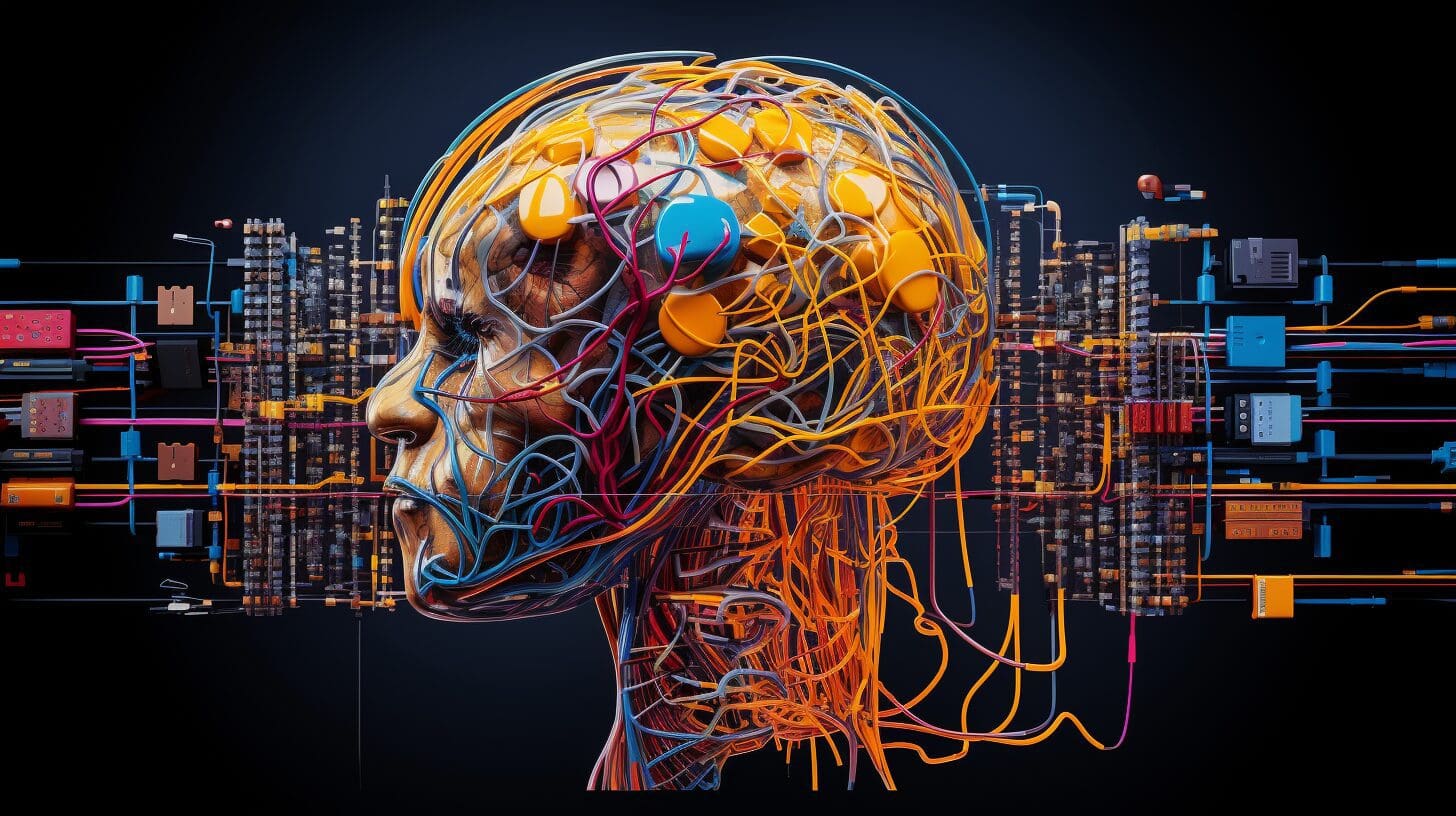Machine learning powers the AI advancements we are all living through these days. Our world is being flipped upside down it’s flipping our world upside down — in mostly good ways, of course. It’s changing everything from how we binge-watch our favorite shows to how we ghost on email threads at work (not that we’d ever do that). The wizards behind this digital magic? Machine learning algorithms. These are what let computers soak up data like a sponge, spot trends, and then make decisions like they’re the next Einstein.
Now, if you’re itching to jump on the machine learning bandwagon, understanding these algorithms is like learning the ABCs for aspiring data scientists and machine learning engineers. But hold on, it’s a jungle out there with more algorithms than you can shake a stick at. So, what’s the cheat sheet? Well, this piece aims to be your GPS, guiding you through the top 10 machine learning algorithms you’ve just gotta know.
Don’t just think these algorithms are the popular kids in the schoolyard of tech and academia. They’re like the Swiss Army knives of machine learning, offering you tools for everything: supervised learning, unsupervised learning, semi-supervised learning, and even the bad-boy rebel of the bunch, reinforcement learning. Master these, and you won’t just be dipping your toes in the machine learning pool — you’ll be doing cannonballs into real-world problem-solving.
1. Linear Regression
Linear Regression is a fundamental algorithm in machine learning. It is a simple yet powerful approach for predicting a quantitative response. Used in various fields like economics, business, and medical sciences, Linear Regression is a good starting point when dealing with regression problems.
In Linear Regression, the relationship between the input variables (or features) and the output variable is assumed to be a linear function. The algorithm tries to find the best fit line that minimizes the sum of the squared errors between the actual and predicted values.
Linear Regression is often used in forecasting and trend analysis. For example, it can be used to predict future sales based on past data or to estimate the impact of price changes on demand. However, it’s not suited for non-linear relationships or when there are complex interactions between features.
2. Logistic Regression
Logistic Regression is a variant of Linear Regression used when the response variable is categorical. This makes it ideal for binary classification problems where the goal is to categorize an instance into one of two classes.
In Logistic Regression, the output is transformed using a logistic function to return a probability value between 0 and 1. This probability is then used to classify the instance. Unlike Linear Regression, Logistic Regression can handle non-linear effects and interactions between features.
It is commonly used in medical fields and social sciences for predicting binary outcomes like whether a patient has a disease or not, or if a customer will churn. However, it might not perform well when there are multiple or non-linear decision boundaries.
3. Decision Trees
Decision Trees are intuitive and easy-to-understand algorithms used for both regression and classification problems. They work by breaking down a dataset into smaller subsets based on decision rules, forming a tree-like model of decisions.
A decision tree algorithm splits the data based on feature values, trying to create pure nodes (nodes that contain instances of a single class). This process is repeated recursively, creating a hierarchy of decisions leading to the final prediction.
Decision Trees are useful in scenarios where interpretability is important, as the decisions can be visualized and easily understood. They can handle both numerical and categorical data. However, they can easily overfit and are sensitive to small changes in the data.
4. Support Vector Machines
Support Vector Machines (SVMs) are powerful algorithms used for classification and regression tasks. They are particularly known for their ability to handle high-dimensional data and for their strong theoretical guarantees.
SVMs work by finding the hyperplane that best separates the classes in the data. This is achieved by maximizing the margin, or distance, between the closest instances of the classes (the support vectors). In the case of non-linearly separable data, SVMs use a trick called the kernel trick to project the data into a higher-dimensional space where it is linearly separable.
SVMs are often used in text classification and image recognition tasks due to their effectiveness in high-dimensional spaces. However, they can be less effective when the number of features is much greater than the number of samples and they require careful normalization of the input data and parameter tuning.
5. Naive Bayes
Naive Bayes is a classification technique based on applying Bayes’ theorem with the “naive” assumption of independence between every pair of features. Despite this simplifying assumption, Naive Bayes classifiers have worked quite well in many real-world situations.
The Naive Bayes algorithm calculates the probabilities of each attribute of the data belonging to each class, and then applies Bayes’ theorem to calculate the probability of a class given a set of attributes. The class with the highest probability is then chosen as the prediction.
Naive Bayes is often used in text classification, spam filtering, and recommendation systems. It’s simple and fast, making it a good choice for high-dimensional datasets. However, its assumption of feature independence can limit its effectiveness in some cases, especially when there is a clear correlation between features.
6. K-Nearest Neighbors
K-Nearest Neighbors (KNN) is a simple, yet effective, machine learning algorithm for both classification and regression. Unlike most other methods, KNN is a type of instance-based learning, which means it doesn’t learn an explicit model. Instead, it bases its predictions on the k most similar instances in the training data.
KNN calculates the distance between the new instance and all instances in the training set, selects the k closest instances, and assigns the most common class (in classification) or the average value (in regression) of these k instances to the new instance.
KNN is often used in recommendation systems, image recognition, and anomaly detection. It’s an excellent choice when data labels are difficult or expensive to obtain, as it can yield reasonable predictions without any prior knowledge. However, it may not perform well with high-dimensional or large datasets due to the “curse of dimensionality” and computational costs, respectively.
7. Random Forest
Random Forest is a versatile ensemble method that combines multiple decision trees to produce more accurate predictions. It’s known for its robustness against overfitting and its ability to handle large datasets with high dimensionality.
Random Forest creates a set of decision trees from randomly selected subsets of the training set and aggregates their outputs to make a final prediction. Each tree in the forest is trained on a different bootstrap sample of the data, and at each node, a random subset of features is considered for splitting.
Random Forest is commonly used in various domains like banking, stock market, medicine, and e-commerce. It’s effective when there are lots of features and complex relationships. However, they may not perform well with very high-dimensional sparse data like text data, and they’re less interpretable than individual decision trees.
8. Gradient Boosting
Gradient Boosting is another powerful ensemble method used for regression and classification problems. It works by combining weak learners into a single strong learner in an iterative manner.
Gradient Boosting involves three elements: a loss function to be optimized, a weak learner to make predictions, and an additive model to add weak learners to minimize the loss function. It builds the model in a stage-wise fashion, and it generalizes them by allowing an arbitrary differentiable loss function.
Gradient Boosting is often used in ranking algorithms, like search engines, and in ecology to model species distributions. It tends to outperform Random Forest on certain datasets, especially when handling unbalanced data. However, it’s more sensitive to overfitting if the data is noisy, and it’s more computationally intensive.
9. Neural Networks
Deep learning networks, a specialized form of neural networks, have been revolutionary in the field of machine learning, driving major breakthroughs in AI. These networks excel at spotting patterns and are the go-to choice for intricate challenges like identifying objects in images or understanding spoken words.
Imagine a neural network as a series of connected layers, each filled with tiny processing units called “neurons.” These neurons receive incoming data, process it using a specific formula, and then send the result onward to the next layer. As the network trains, it fine-tunes the strength of these connections to get better at making precise guesses.
While these networks shine in areas like computer vision, natural language understanding, and voice recognition, they do come with their own set of limitations. For starters, they gulp down a lot of data, computing power, and time to get trained. Plus, they’re a bit of a mystery box, making it tough to fully grasp how they reach their conclusions, especially when compared to simpler, more transparent models.
10. Reinforcement Learning
Reinforcement Learning is an area of machine learning where an agent learns to make decisions by interacting with an environment. It is heavily used in robotics, gaming, navigation, and real-time decisions.
In Reinforcement Learning, an agent takes actions in an environment to reach a goal. It learns from the consequences of its actions, with rewards given for correct decisions and penalties for incorrect ones. Over time, the agent learns the optimal strategy or “policy” to achieve its goal.
Reinforcement Learning is often employed in areas like game playing (e.g., AlphaGo), autonomous vehicles, or any task that requires a sequence of decisions. However, it requires a lot of data and computation for the agent to learn effectively, and it’s not suitable when you need a prediction model with immediate results.
Conclusion
In conclusion, while this is by no means an exhaustive list, these ten machine learning algorithms offer a comprehensive introduction to the field. They encompass a wide range of techniques and applications, providing a robust toolkit for tackling diverse problems.
Moreover, understanding these algorithms not only equips you to develop effective machine learning models, but also deepens your appreciation of the transformative power of machine learning. So whether you’re a seasoned practitioner or a curious newcomer, we hope this article serves as a useful guide on your machine learning journey.



![Python Decorators Unleashed [eBook]](https://datasciencehorizons.com/wp-content/uploads/2023/10/python_decorators_unleashed_ebook_header-150x150.webp)







